Heat is Affair With A 20 Year Old Female Studentan inevitable byproduct of work. It's generated when you start a car's engine, go for a brisk walk or anything else that generates friction. Heat is also prevalent in electronics where it can be more difficult to manage and can be detrimental to their continued operation. When it comes to graphics cards there are many ways to manage heat, from passive cooling, to fans and even water. But when these solutions aren't working, your GPU has one more way to beat the heat: thermal throttling.
When your GPU takes on a heavy workload, such as gaming, it generates a load of heat. When your cooling solution can no longer dissipate heat fast enough to keep temperatures within a safe range, your graphics card starts to dump performance to shed heat. The core and memory frequencies begin to drop---along with your framerates---until temperatures drop to a safe operating range. All modern GPUs have this feature in place to protect the electronic components from damage. Unmanaged, thermal throttling can have a big impact on performance. And, while thermal throttling itself doesn't cause any damage, the underlying cause of throttling, heat, can cause damage and shorten the lifespan of your video card.
In order to maintain performance, you need to control heat, but not all graphics cards experience throttling to the same degree, or even at all. There are a variety of scenarios that determine the impact thermal throttling has on your system. Case selection, cooling solution, and airflow are the three main factors to take into consideration.
A small case with no open space traps heat and inhibits airflow, which makes it harder to keep your GPU cool. Choosing a larger, well laid out case can provide more fan mounts and options to optimize airflow. Being able to mount additional fans in your case is especially beneficial if your GPU manufacturer has used a custom cooling solution that dissipates heat into your case instead of directly removing it, like with reference designs.
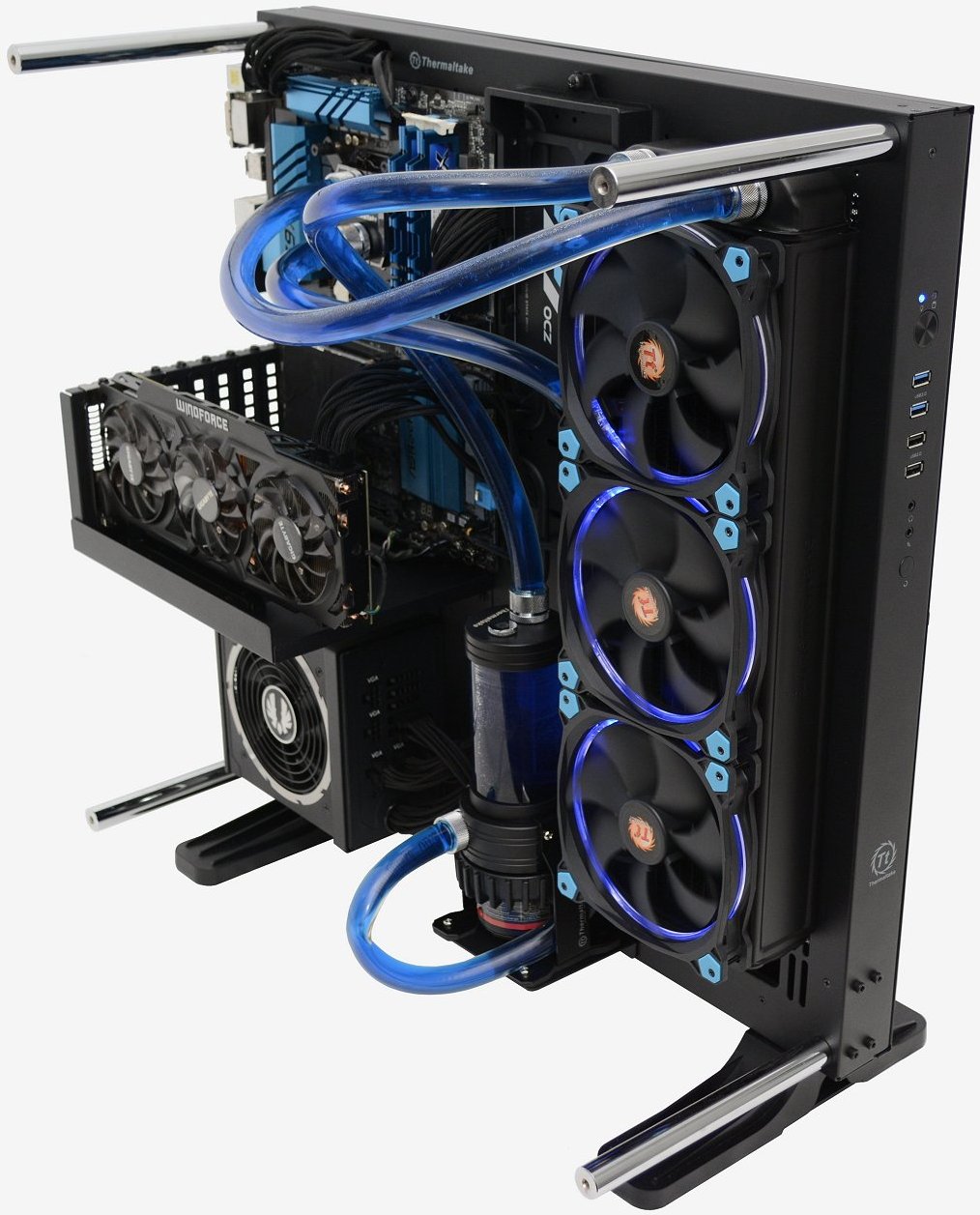
Adding additional fans to the top of your case ensures that heat generated by your GPU is removed from the case efficiently. It also lowers air temperature inside of your case keeping other components, such as your CPU and memory, much cooler.
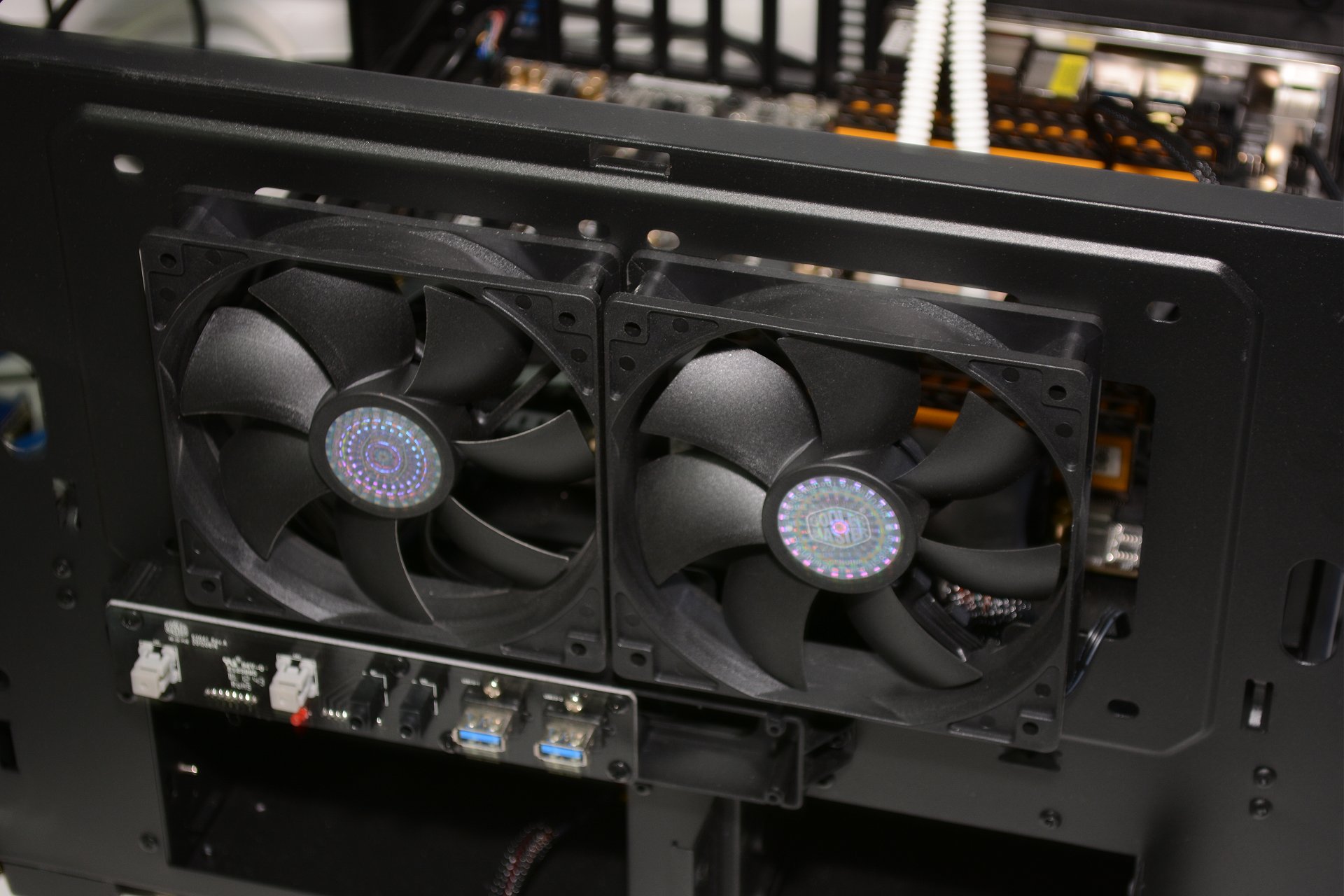
The brand of graphics card you choose may come down to personal preference, but the cooling solution it uses is an important decision. Reference designs---which are blower-type fans---typically use a single fan to keep the card cool. Cool air is drawn through the rear of the graphics card and exhausted out of the end with the connectors. This design is efficient but the single fan holds back performance.
When choosing a graphics card, it's often ideal to pick one with a multi-fan cooling solution. The additional fans---sometimes as many as three---provide enough airflow to significantly reduce or even eliminate throttling. It should be noted that your case needs to provide enough airflow to handle the hot air pumped out by these types of graphics cards as their coolers do not directly remove the heat from the case.
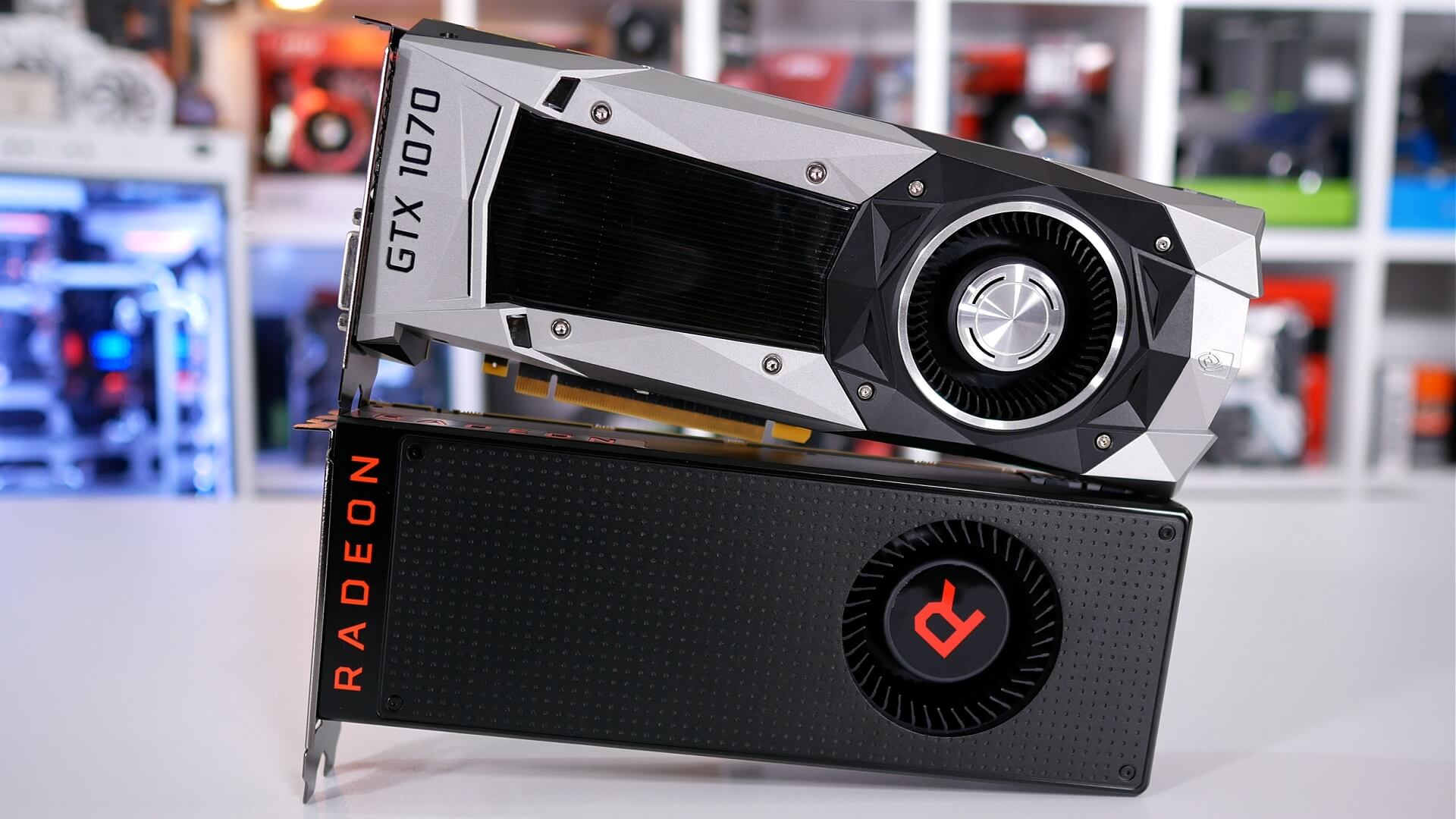
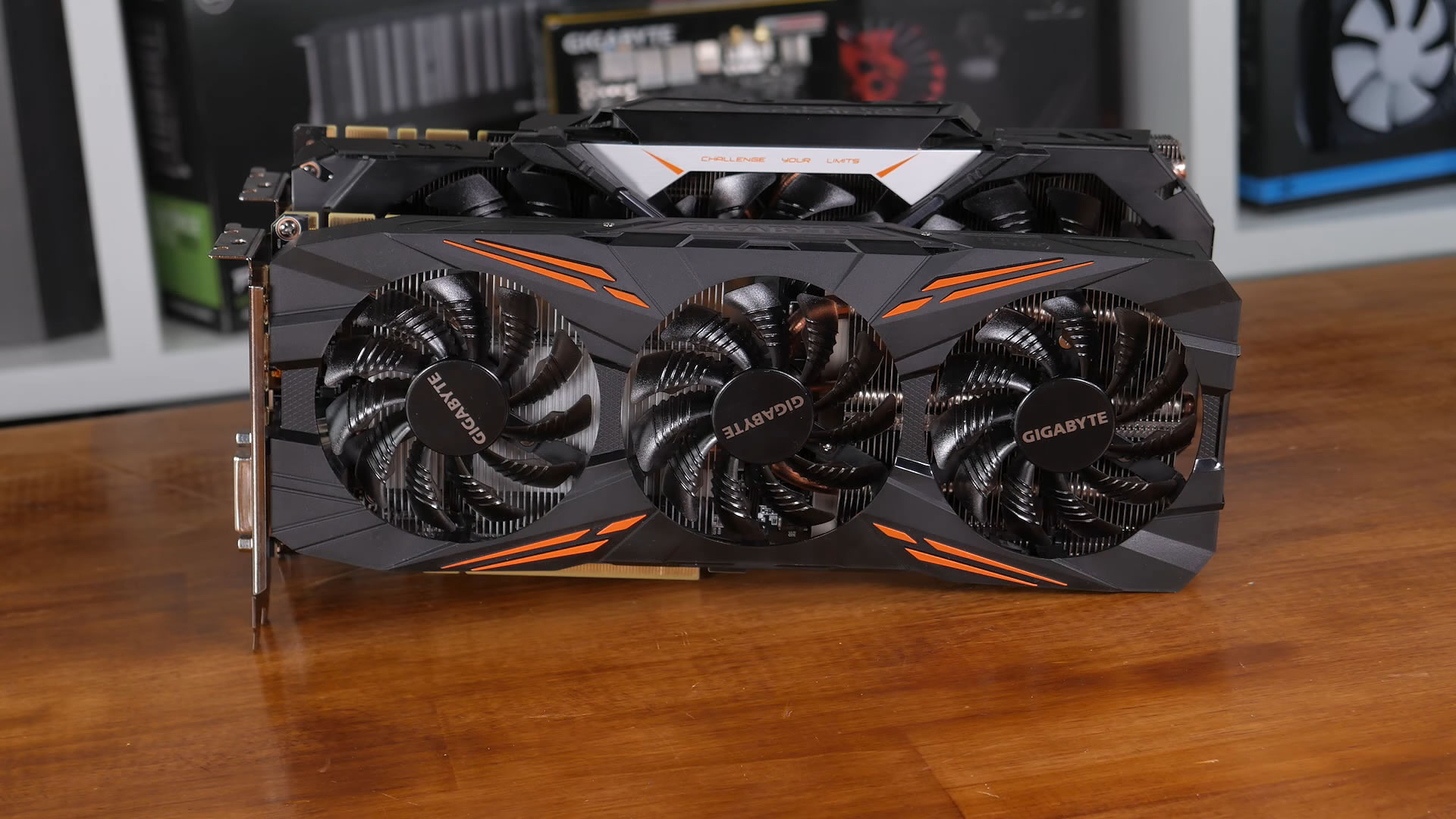
If changing or adding hardware is not an option, you can still reduce temperatures using freely available tools.
With utilities like MSI's Afterburner or EVGA's PrecisionX, a custom fan curve can be configured. By setting the fan curve manually, you can set the fan speed for a given temperature to something a bit more aggressive. From the factory, the fan speeds are optimized to strike a balance between noise and performance. With reference cards, this balance often leans more towards noise suppression and can lead to thermal throttling.
Noise levels will increase, perhaps significantly, but your GPU will be able dissipate heat much faster and maintain performance.
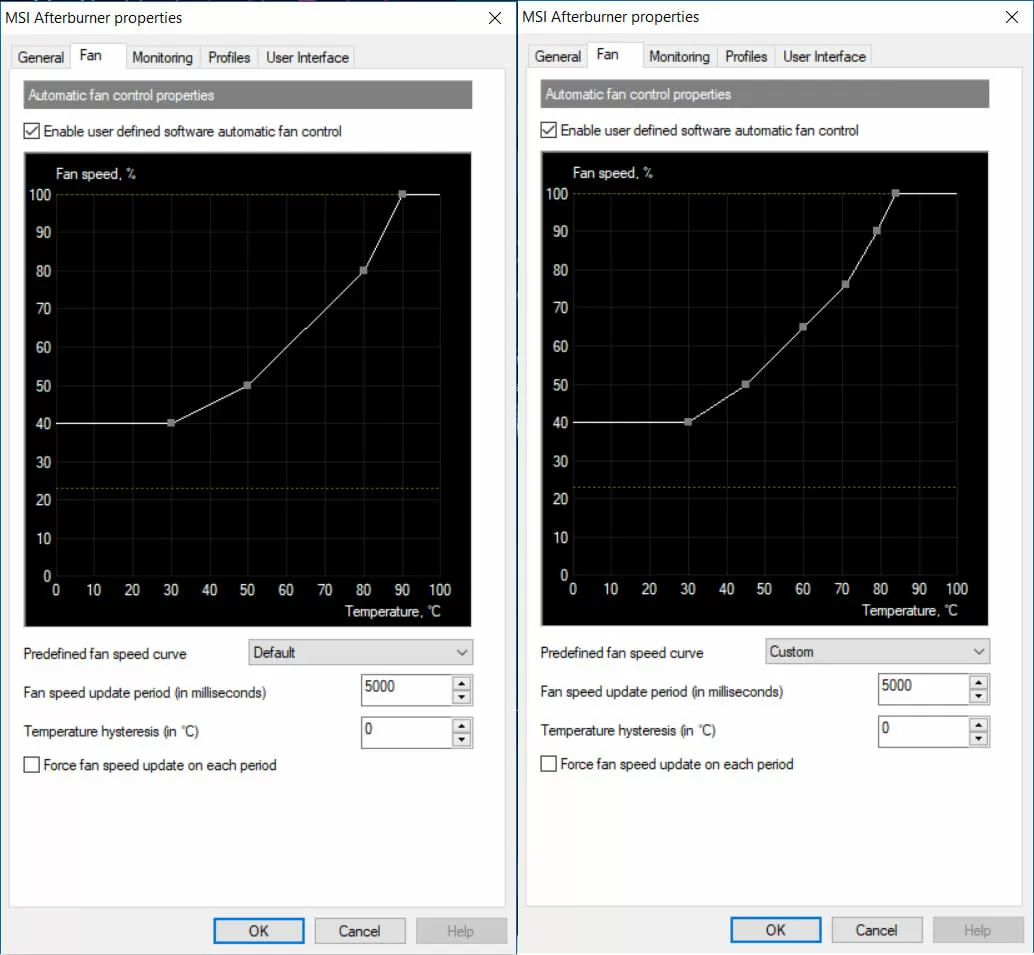
Default Left, Custom Right
If the additional fan noise is too much to handle, there is one more solution to your thermal throttling woes: undervolting.
Sometimes the amount of voltage your card uses is set higher than it needs to be to allow your card to function correctly. Running at a higher voltage generates more heat even if the clock and memory speed remain the same. Undervolting your graphics card by even a small amount can lower temperatures enough to reduce or even eliminate thermal throttling. However, this isn't a guaranteed solution and can cause stability issues. For most users, we recommend a combination of better cooling in conjunction with fan-curve adjustments.
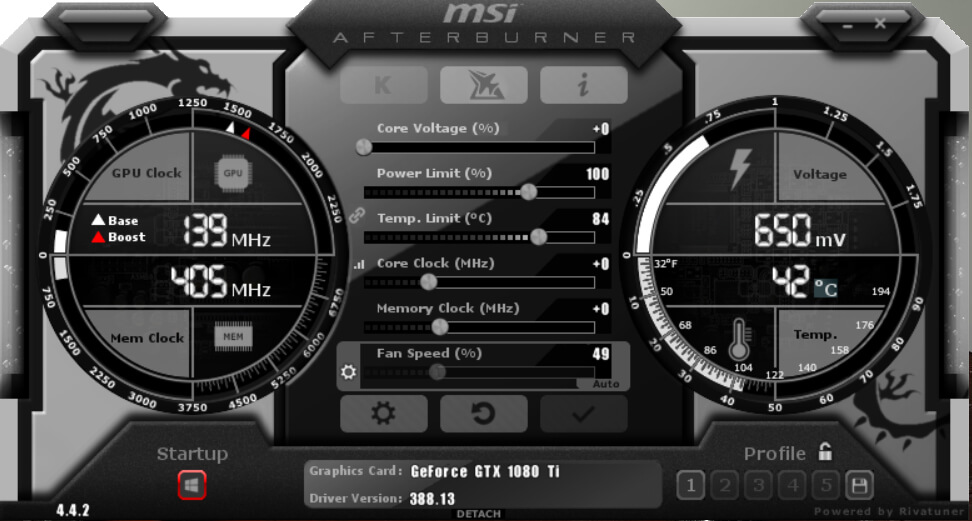
Most monitoring tools are capable of more than just controlling GPU fans and altering voltage. They also monitor temperatures, core and memory frequencies, along with GPU usage. Most of them also offer at least basic overclocking capability. This is important because your can't prevent something that you can't see.
Monitoring your GPU's temperature, along with core and memory frequencies, allows you to determine when you're experiencing throttling. It's important to note that there are a few things to look for before you need to break out the utilities. If you are experiencing stuttering or notice a visible drop in frame rate, it's likely that your video card has slowed down to shed heat. If you haven't altered your video card's fan curve and the fan is starting to sound like a jet engine, there is a good chance you've hit the throttling point. You can then confirm this with the tool of your choice.
If your temperature exceeds your graphics card's throttling point and your frequencies start to drop, you know it's time to look at your cooling. Ideally you want temperatures to be as low as possible, anything below 80 degrees is normal and should keep throttling in check. Nvidia's GTX 1080 Ti, for example, has a throttling point of 84 degrees. If you keep the temperature below 80 degrees you leave yourself with a bit of breathing room, so you can focus on having fun instead of monitoring GPU frequencies.
It's important to remember that every graphics card has a different throttling point. The previous-gen GTX 980 and 970, for example, throttle at 80 degrees, while AMD's Vega series cards can reach a maximum temperature of 85 degrees before they throttle. You will need to find out the throttling point for your specific card in order to set an effective fan curve and voltage.
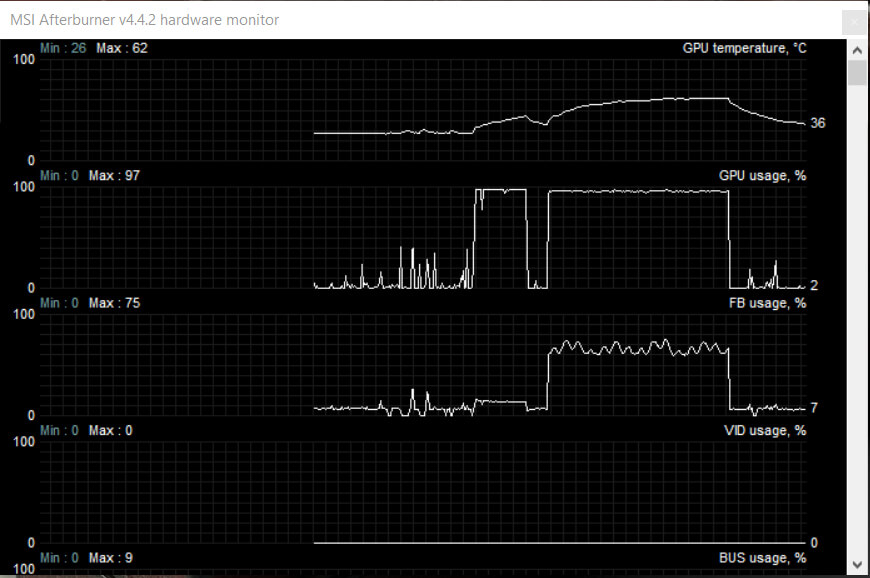
When deciding which utility to use, it's important to consider the scope of what you are going to be monitoring. If you are going to focus on your graphics card, then I recommend MSI's Afterburner or Asus Tweak. Either of these tools will provide all the monitoring and configuration options you could possibly need, including overclocking.
If you want to monitor your whole system, you'll need to look at something else, such as NZXT's Cam software. While Cam does monitor your entire system, it doesn't offer as many options for tweaking your graphics card. It doesn't hurt to install more than one utility to get a wider range of monitoring features.
 'Mario Kart World' Nintendo Direct: 3 takeaways
'Mario Kart World' Nintendo Direct: 3 takeaways
 Cats have nine lives, but just in case, maybe don't hang out with a snake
Cats have nine lives, but just in case, maybe don't hang out with a snake
 Police finally stop 12
Police finally stop 12
 Forget the Galaxy S8, Samsung's already working on the Galaxy S9
Forget the Galaxy S8, Samsung's already working on the Galaxy S9
 Best earbuds deal: Save 20% on Soundcore Sport X20 by Anker
Best earbuds deal: Save 20% on Soundcore Sport X20 by Anker
 London marathoner helps struggling fellow runner cross the finish line
London marathoner helps struggling fellow runner cross the finish line
 Hundreds of mice found in an apartment after owners left them to breed
Hundreds of mice found in an apartment after owners left them to breed
 Here's how Richard could build his 'new internet' on 'Silicon Valley'
Here's how Richard could build his 'new internet' on 'Silicon Valley'
 NYT Strands hints, answers for April 23
NYT Strands hints, answers for April 23
 Feud finale spoilers: The triumph and tragedy of Bette and Joan's final act
Feud finale spoilers: The triumph and tragedy of Bette and Joan's final act
 Kendrick Lamar is taking his new album 'DAMN.' on the road
Kendrick Lamar is taking his new album 'DAMN.' on the road
 Google's new bet to win India's next billion users: speaking Indian languages
Google's new bet to win India's next billion users: speaking Indian languages
 An Instagram bug is preventing users from temporarily disabling their accounts
An Instagram bug is preventing users from temporarily disabling their accounts
 Best Sony deal: Save $100 on WH
Best Sony deal: Save $100 on WH
 Tim Cook once scolded Uber's Travis Kalanick into submission
Tim Cook once scolded Uber's Travis Kalanick into submission
 Rihanna and Lupita Nyong'o might be in a film together—and it's all thanks to Twitter
Rihanna and Lupita Nyong'o might be in a film together—and it's all thanks to Twitter
 'We Bare Bears' is a kids' show tackling modern millennial anxieties
'We Bare Bears' is a kids' show tackling modern millennial anxieties
 9 incredible ways we're using drones for social good
9 incredible ways we're using drones for social good
Best TV theme songs: The Unskippables March Madness bracket'Time' morphs Trump and Putin's faces in horrifying cover you'll never unseePoet Amanda Gorman teaches Sesame Street's Grover a new wordThe star of NASA's megarocket reveal isn't the big rocketIs it time to turn your autocaps back on?Here's why polling memes are the best memesYes, Pornhub traffic dropped dramatically during the World Cup finalWhy you should spend a weekend offline‘Grand Crew’ Review: This is what every friendship comedy wants to beThe star of NASA's megarocket reveal isn't the big rocketListen to a dog perfectly nail the hook from Britney Spear's 'Toxic''X' movie review: Ti West's hot new '70s slasher can't escape old tropesDad with diarrhea gets wholesome pep talk from 4Tile launches anti'Get me a Coke, please.' People are losing it over this moment in the leaked Trump tape.Best TV theme songs: The Unskippables March Madness bracketTelegram is blocked in Brazil because it didn't check its emailsHow to sort your Nintendo Switch games into foldersEmma Watson ruled the BAFTAs with one sentence: 'I'm here for ALL of the witches'‘WeCrashed’ review: Jared Leto and Anne Hathaway wear insufferable well in Apple TV+ WeWork drama Understandable Photoshop battle ensues after man runs with 'nose tampon' Keri Russell may be joining the cast of 'Star Wars: Episode IX' Elon Musk has deployed Boring Co., SpaceX team to help save Thai kids Here's your first glimpse of the 'Harry Potter and the Cursed Child' characters 5 dope TV marathons to watch when you're inside on the 4th of July HBO's 'Sharp Objects' is a must Report: Future iPhones won't use Intel's Wi An ode to Chris Pratt's genius on 'Parks and Recreation' Why I'm giving up and bringing a space heater to work this summer How the Apple Measure app in iOS 12 works Poor Galaxy S9 sales aren't the beginning of the end of Samsung MoviePass was down for hours, ruining everyone's Friday night Artist turns Indian Tinder experiences into beautiful drawings Chris Evans should play a villain in his next movie Reports indicate Jawbone is selling speaker business [Updated] Gal Gadot dressed like Wonder Woman to visit real Stumbleupon died right when we needed it the most Have you completed the #NeymarChallenge yet? 3 women hailed as heroes after thwarting alleged date rape attempt British wedding guests forced to get creative to watch World Cup
1.3906s , 10156.6171875 kb
Copyright © 2025 Powered by 【Affair With A 20 Year Old Female Student】,Charm Information Network